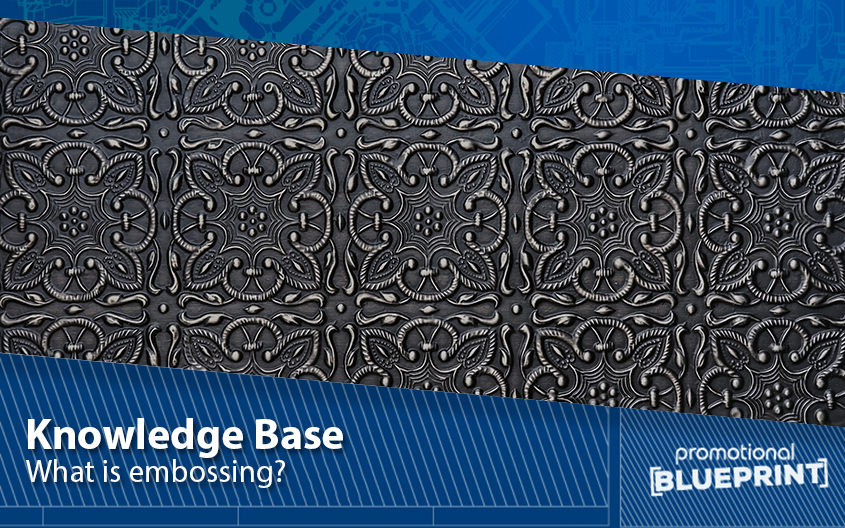
Embossing is a unique printing technique whose final result is a 3D image. You can use it for printing logos or anything else you want to highlight. The bottom line is, the targeted part of the image will pop up from the surface. This way, your print gets a more sophisticated and more original look.
A similar term in the printing industry goes by the name of debossing. Although debossing also forms a 3D image, it refers to the process opposite to embossing. The difference lies in the fact that debossing creates an indent in paper. So, what you get using this printing method is a depressed surface.
How Does Embossing Work?
This printing process uses two types of dies. One of them has an indent, while the other has a raised part in the same shape. These two would fit perfectly into each other, but their surfaces never directly touch. Instead, between them lies a piece of paper ready to feature your 3D image.
This technique presses the two dies tightly together. With the help of heat, pressure, and ink, the paper between them gets imprinted with the targeted shape. Depending on the design of your image, the raised surface can seem more elevated than it is in reality. But bear in mind that a deeper imprint might cause your paper to tear more easily.
Where Can You Use Embossing?
As you already know, this printing practice gives a regular piece of paper a more elegant look. Thus, the best way to use it is for important documents distributed on special occasions. For example, you can emboss certificates, diplomas, or thesis covers. You can also make your business cards or brochures more sophisticated by giving them a 3D look.
What Does Blind Embossing Mean?
Blind embossing refers to the printing practice of making a 3D image without using ink or foil. Instead, you only need to put enough pressure onto the paper you want to emboss. As before, the final result will also be a surface raised from the piece of paper. However, this bump will be the same colour as your paper since there was no ink.
For blind embossing, you can use textured paper instead of the regular one. That’s because this technique makes it possible for the embossed part to be smooth. This way, you get higher contrast between the two surfaces. In turn, your embossed design stands out more and leaves a better impression.
Contact Us Today
The basics of embossing are in the sections above. However, if you want to find out even more, you can give us a call at 0800 0148 970 or simply email us today. We can talk about any topic related to printing and help you find your way around it all.
Related content:
Branding & Printing Guides






